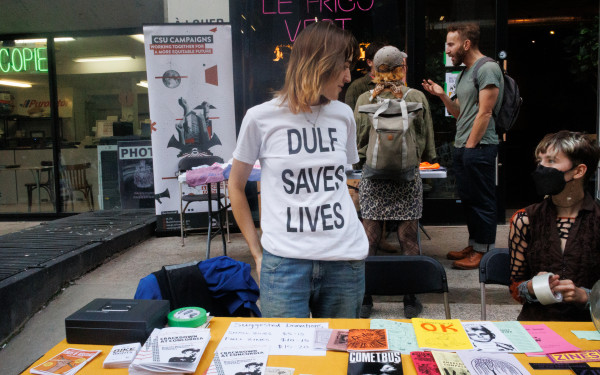Notes on Media Coverage of the Fentanyl Outbreak
Fentanyl is an opiod painkiller notorious for its potency, presenting a high risk for overdose when used recreationally.
The lethalness of the drug is widely covered by the media, the epidemic equally well reported, meaning the public’s opinion is understandably fearful.
No matter how many times mortality rates are published, users will continue to use. Drugs are part of our society—allowing businessmen to run 24-hour shifts, the blue-collar worker to unbutton, and the rock bottom to blunt their existence. Fentanyl is the new patch, powder and pop on the block, presenting a cheap and exciting offer for those in need of a thrill.
Although numbers and fear sell papers, they don’t solve addictions. When The Globe and Mail runs articles titled “A Killer High; How Canada got addicted to fentanyl,” what are they doing besides inciting fear? An article outlining how users buy the drug from overseas simply shows what not to do, unless the goal is increased addiction. The only takeaway was how cheap and available fentanyl is, a revelation published many times before.
In a New York Times article called “Heroin Epidemic is Yielding to a Deadlier Cousin: Fentanyl,” the magazine listed America’s fentanyl deaths and busts by state—a metric which breaks down the numbers on how users have failed to safely use the drug. Wouldn’t articles outlining safe doses of fentanyl work towards lowering the death toll? The article’s firsthand accounts of how overdoses occur so quickly that naloxone—an opioid blocking antidote—cannot be administered before death is chilling. But instead of dwelling on fatalities, why not find out how death is avoided?
Education and awareness are the most powerful antidotes to any street drug. Knowing what you’re doing, how to take it, how much to take and what it entails is key knowledge for responsible—or, at least, not deadly—usage.
Doctors trained to safely administer fentanyl handle the drug with care, but they are not the ones delivering the majority of fatal doses. If the fentanyl pandemic is to be curbed, people need to stop dying. Rehab is a useful resource, but very hard to attend posthumously.
It is impossible to deny opioid usage is approaching pandemic levels. British Columbia’s provincial health officer Perry Kendall declared a public health emergency in April 2016, after provincial overdose deaths rose 30 per cent from 2014 to 2015—with fentanyl involved in 31 per cent of cases. According to data from the Centre for Disease Control, the US has seen a 75 per cent increase in deaths involving powerful synthetic opiates, like fentanyl, in the same one year span.
Mass media needs to mature and outgrow shallow stigmas towards drug use. Education is power, and a chance for users to save themselves. Death totals turn human issues into statistics, alienating viewers from a harsh reality. People are dying at an alarming rate, seemingly making the same mistakes over and over. Perhaps they just don’t know any better.
The status quo should see users and addicts treated with dignity, and given an opportunity to redeem themselves. This means empowering “illegal” users with the same knowledge as those administering fentanyl legally.
The abuse is rampant, so instead of fearing the trend, let’s lessen its lethality. It’s time to get off our sober high horse.


_600_832_s.png)



_600_375_90_s_c1.jpg)
